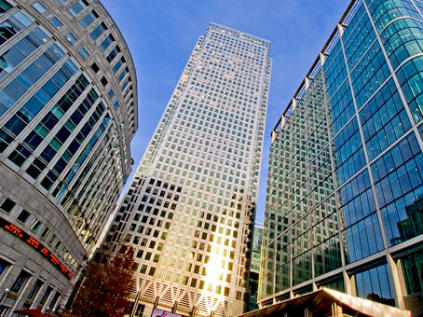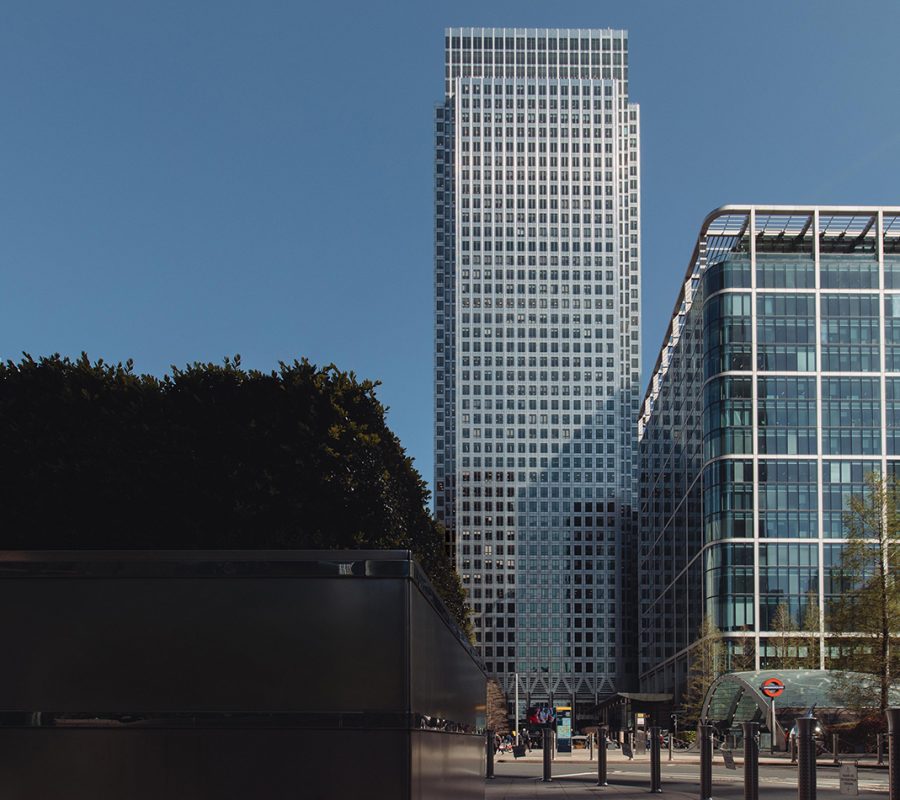Location:Canary Wharf
Office Space in Canary Wharf
Canary Wharf office space is as distinctive and significant as the businesses and organisations that base themselves there.
Located near the Isle of Dogs in the London Borough of Tower Hamlets in East London. The Greater London Authority defines the district as part of London’s central business district alongside Central London.
It is the United Kingdom’s second-most powerful financial centre, following the City of London, and is home to the headquarters of many of the world’s largest companies and institutions.
Many choose to rent office space in Canary Wharf’s commanding high-rise office towers, including One Canada Square.
At 770 feet (235 m), the 50-storey One Canada Square was the tallest building in London when it was completed in 1991 and the César Pelli-designed property held the title for 21 years until the completion of The Shard, standing 1,017 feet (310m) in 2012.
As of 2024, Canary Wharf was home to several of the tallest buildings in the United Kingdom. Including One Canada Square, the district contains the Landmark Pinnacle at 233 m (764 ft), which is the tallest residential tower in the UK and western Europe, the Foster + Partners-designed South Quay Plaza at 215 m (705 ft), and Novotel London Canary Wharf which is the tallest all-hotel building in the United Kingdom. Also known as 40 Marsh Wall, the 39-storey hotel is 127 m (419 ft) tall.
Canary Wharf was developed on the former West India Docks site and contains around 16,000,000 square feet (1,500,000 square metres) of office, retail, leisure and residential space. Together with Heron Quays and Wood Wharf, the Canary Wharf Estate comprises around just under 100 acres.
From 1802 to the late 1980s, the area was part of the Isle of Dogs in Millwall, Limehouse, and Poplar and was one of the busiest docks in the world. The West India Docks were primarily developed by Robert Milligan (1746–1809), who established the West India Dock Company.
Sir Alfred Lewis Jones (1845 – 1909) was a Welsh shipping magnate and a prominent figure in the Canary Islands. His enterprise had led to a continuous stream of ships arriving at London’s South Quay Dock and the naming of Canary Wharf after the ships’ origin.
The Port of London Authority was established and took control of West India Dock in 1909.
Cargo became containerised in the 1960s, leading to the decline in the port industry and the closure of all the docks by 1980.
After the docks closed in 1980, the United Kingdom government adopted policies to encourage redevelopment of the area, including establishing the London Docklands Development Corporation (LDDC) in 1981.
The transformation of Canary Wharf into what we see today began when a chairman of Credit Suisse First Boston (CSFB), formulated the idea to convert Canary Wharf into a back office. Further discussions led to proposals for a new business district. They included the LDDC developing a light metro scheme, the Docklands Light Railway (DLR), to use the large amount of redundant railway infrastructure.
The development project was sold to the Canadian company Olympia & York. Construction began in 1988, master-planned by Skidmore, Owings & Merrill, with Yorke Rosenberg Mardall as their UK advisor.
One Canada Square was the first building to be completed in 1991 and became a symbol of the regeneration of Docklands.
In October 1995, an international consortium bought control of the scheme for $1.2 billion. The new company, Canary Wharf Limited, went public in 1999 and became the Canary Wharf Group Plc.
In 2004, Canary Wharf Group Plc. was taken over by a consortium of investors backed by its largest shareholder, Glick Family Investments. Morgan Stanley led the consortium using an investment vehicle named Songbird Estates Plc.
In late 2023, it was announced that Canary Wharf Group Plc’s largest shareholders, including Brookfield and the Qatar Investment Authority, would inject £400 million of fresh capital into the London office district.
In early 2024, it was revealed that The University of Sunderland had taken nearly 100,000 square feet of office space at Harbour Exchange in Canary Wharf, marking one of the largest education lettings in the district’s history.
In the same period, it was also announced that Morgan Stanley had agreed to keep its 547,000-square-foot European headquarters in Canary Wharf, extending leases at 25 Cabot Street and 20 Bank Street until 2038. Barclays also agreed to extend its lease at One Churchill Place by five years to 2039.
Other businesses and organisations from a wide range of sectors chose to rent office space at Canary Wharf, including Allianz Trade, Banco Bilbao Vizcaya Argentaria, S.A (BBVA), Citigroup, Doctors of the World, EY, Fora, HSBC, JP Morgan, KPMG, The Office Group (TOG) and UCL School of Management.
Incoming occupiers can choose prime office spaces to rent that are available with state-of-the-art infrastructure and ready-to-fit.
There is also a growing number of CAT A ready-fitted plug-and-play office spaces managed by premium office providers and workspace operators on behalf of clients.
The high-end private serviced and managed offices are available on relatively short-term contracts compared to leased offices, and the licences allow for extensions to terms and expansion into larger suites.
These options offer all-inclusive packages, so the monthly rent covers utilities, cleaning, furnishings, buildings insurance, reception, administrative support, and concierge services.
These 5-star workspaces are equipped with state-of-the-art business technologies, such as secure enterprise-grade IT systems and amenities, including business lounges, private phone booths, gyms and shower facilities.
With the calibre of office tenants in Canary Wharf comes an array of outstanding amenities. The Canary Wharf Shopping Centre is comprised of five malls: Cabot Place, Canada Place, Churchill Place, Crossrail Place, and Jubilee Place. These are the homes of acclaimed retailers such as Amazon Fresh, Bobbi Brown, Breitling, Crockett & Jones, Jo Malone, John Lewis & Partners, Lululemon, Penhaligon’s, and Watches of Switzerland.
Canary Wharf also offers many hotels, health and dental services, childcare facilities, bars, cafes, restaurants, and gyms.
Excellent transport links are offered with Canary Wharf tube station, which is served by the Jubilee line, and the DLR calls at Canary Wharf, Heron Quays and West India Quay stations.
London City Airport is also approximately 20 minutes from Canary Wharf.


